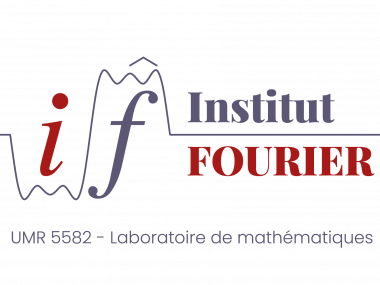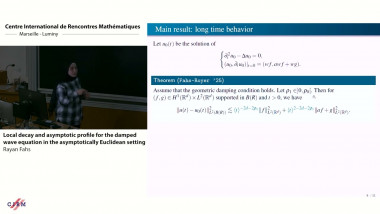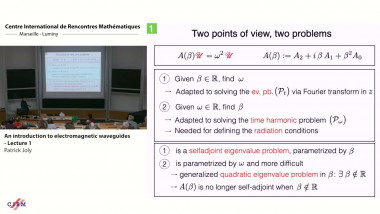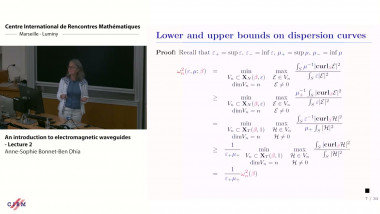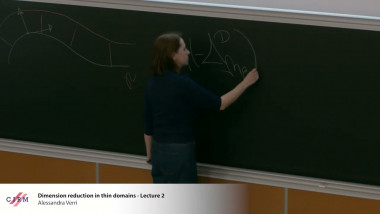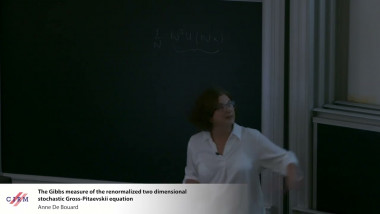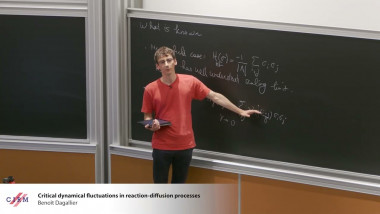An introduction to electromagnetic waveguides - Lecture 1
De Patrick Joly
In the beginning, we shall introduce, for a general second order wave propagation model, the notions of closed waveguide (with heterogeneous cross section) and guided modes that make appear two scalar quantities, the frequency $\omega$ and the (axial) wave number $\beta$, that cannot be independent the one from the other. When searching for such modes, one can adopt two points of view : 1) for a given real wave number look for the possible frequencies 2) for a given real frequency, look for the possible wave numbers. Both problems can be seen, at least formally in a first step, as an eigenvalue problem posed in the cross section of the waveguide. For problem 1), this is a self-adjoint eigenvalue problem and the frequencies are necessarily real. For problem 2), this is quadratic eigenvalue problem where the wavenumber is the spectral parameter and the solutions are not necessarily real. This will be illustrated on the case on the scalar wave equation. The more important part of the course will devoted to electromagnetic waveguides and more precisely to solving problem 1) in this context. After having introduced some basic material for Maxwell equations (differential operators and related functional spaces), I will show that problem 1) amounts to finding the spectrum of a selfadjoint operator with compact resolvent. The proof of such a result is much more delicate than in the scalar case and relies on the Helmholtz decomposition of 2D vector fields and related compactness results.Finally, I will look at the particular case where the electromagnetic wave speed c is constant in the cross section. Using a transverse field formulation, we shall see that looking for modes is equivalent to saying that $\omega^2-\beta^2 c^2$ is an eigenvalue of a ""transverse"" operator A, which is positive selfadjoint with compact resolvent, so that in that case, problems 1) and 2) have a similar complexity. We shall show that the eigenmodes of A can be split into TE (traverse electric) modes, TM (tranverse magneic) modes and possibly TEM modes (when the cross section of the waveguide is not simply connected).








